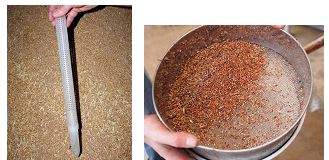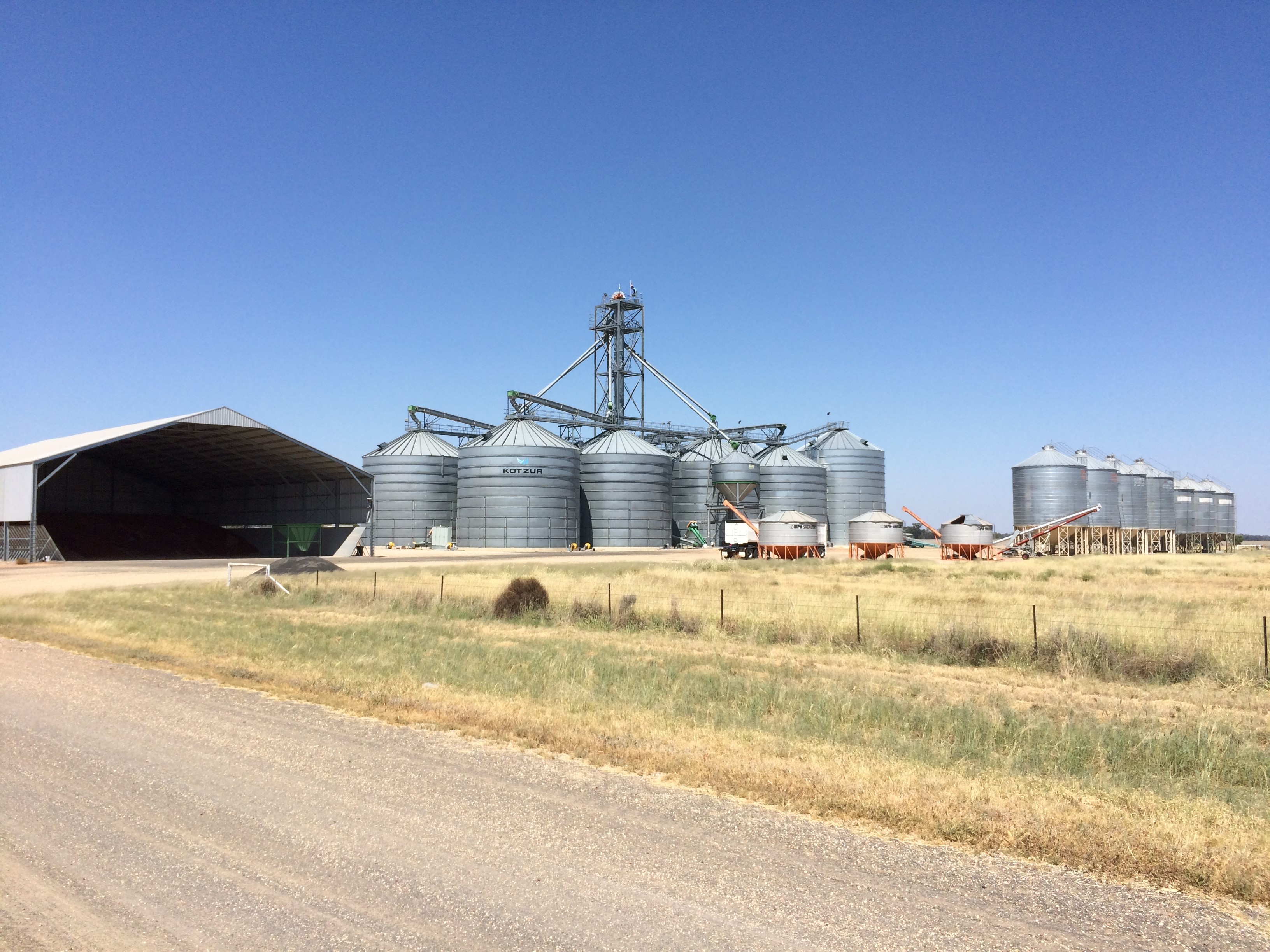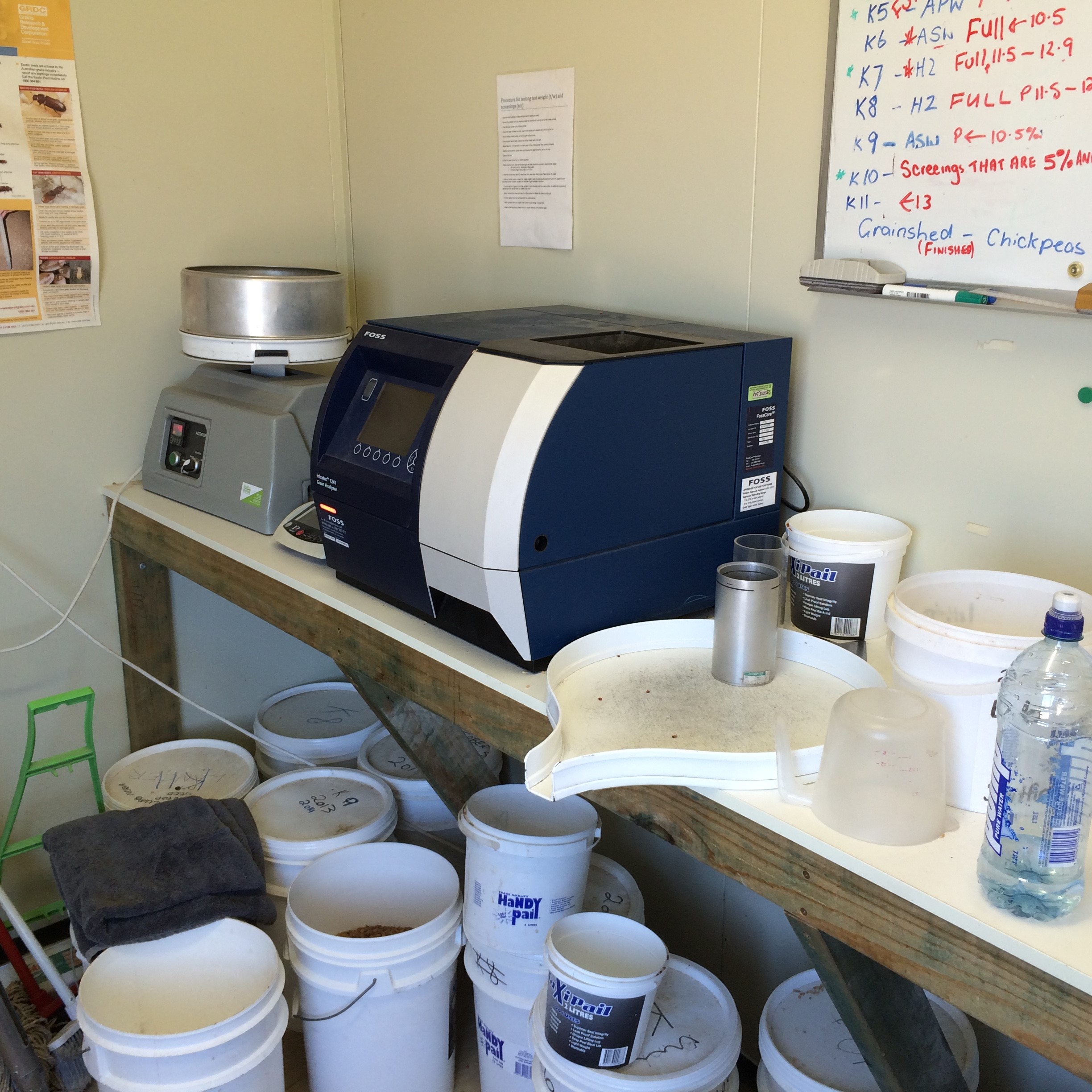On-farm storage practices and records – building grain market confidence
Author: Philip Burrill (DAF Qld., Warwick) | Date: 12 Feb 2019
Take home messages
- Work towards building a reputation as a grower with on-farm storage, who can consistently supply pest-free grain that meets buyers’ quality specifications.
- Talk with grain buyers regularly to keep up-to-date with grain market trends and to know what grain qualities are in demand. At harvest time segregate on grain quality into storages, in order to target specific markets.
- Aim to build your skills in using on-farm ‘grain quality testing equipment’. Know the quality of your grain and what markets are looking for. This puts you in a stronger negotiation position.
- Keep up-to-date storage records of grain quality specifications and approximate tonnages held in each silo.
- Storage records also include monthly notes of insect pests detected in silos, along with any grain treatments applied – fumigations, grain protectant insecticides, plus required commodity vendor declaration (CVD) information.
- Remember to take care; grain in storage is ‘food’. An ingredient for human food or livestock feed. The latter feeds animals that produce products we consume such as meat, eggs, milk, etc.
On-farm storage – build a positive reputation
There are medium and long-term profitable benefits and opportunities that a grower develops when they build a positive grain supply reputation with buyers. Such a reputation would involve consistently supplying a pest-free product from their on-farm storage that meets the buyer’s quality specifications.
Put yourself in the shoes of the grain buyer or end-user. It is not hard to understand the problems and additional costs that can occur if a parcel of grain, on which the buyer has been depending, arrives at the delivery point and is well outside the required grain quality specifications; protein, screenings, noxious weed seeds, moisture content, pests, etc.
The export container trade is an example of where there is very little room for negotiation on grain quality problems at delivery. The buyer is put in the difficult position of trying to quickly find a replacement parcel of grain of the required quality, from a ‘reliable supplier’.
The other area that all markets (both domestic and export) are particularly keen to avoid is ‘chemical residues’ on grain that should not be there. There is potential if product is unacceptable for expensive legal claims and long-term damage to the reputation of a business, or an industry. Grain buyers and end users place considerable value on an accurate CVD when grain is delivered.
Growers who, over time, build a reputation of careful grain storage management, are usually the growers who get the first phone calls from grain buyers. Buyers and end users are keen to develop a long-term relationship with reliable suppliers. It is sound commercial sense, where both parties benefit.
Managing pests and maintaining grain quality – key practices
Fumigations and use of grain protectant insecticides are only two of the five key tools used to maintain grain quality and achieve reliable insect pest control. Combining the five practices outlined in this paper forms the foundation for successful on-farm grain storage.
Top five practices for successful storage:
- Aeration: Correctly designed and managed, aeration provides cool grain temperatures and uniform grain moisture conditions. Aeration cooling reduces storage problems such as moulds and insect pests, plus helps maintain grain quality attributes such as seed colour and germination. Aim for grain temperatures of less than 23°C in summer and below 15°C in winter
- Hygiene: A good standard of storage hygiene is crucial in keeping storage pest numbers to a minimum. Good hygiene for silos, augers and trucks also reduces the risk of seed contamination. The use of diatomaceous earth (e.g. Dryacide™) in empty storage following the grain residues clean out helps to control any remaining insect pests.
- Monitoring: To prevent serious damage, undertake monthly checking of grain in storage for insect pests (sieving / trapping) as well as checking grain quality and temperature. Keep monthly storage records, including any grain treatments applied.
- Fumigation: In Australia, only fumigant gases (e.g. phosphine) are registered to deal with live insect pest infestations in stored grain. To achieve effective fumigations, the storage/silo must be sealable/gas-tight to hold the gas concentration for the required time. For example, a minimum phosphine gas concentration of 200ppm is required for 10 days to control all life stages (egg, larvae, pupae, adult) of storage pests. Check labels for details.
- Grain protectants: Grain protectant insecticide sprays provide another line of defence against storage pests. Before use, always check with potential grain buyers as there are a growing number of markets where grain is required to be pesticide free. Treated planting seed retained on-farm is common. Treat at harvest time, while augering into storage. Always use a registered grain protectant according to label directions.
Warning: Grain protectant notes do not apply to the grains industry in Western Australia where their use is restricted. In all cases, product labels are to be used to determine correct use patterns.

Figure 1. Rust-red Flour Beetle Tribolium castaneum, a common pest of stored grain

Figure 2. A probe trap and insect sieve used for regular grain inspections
Equipment - storage facilities and grain quality testing
Grain growers in eastern Australia are now storing a much larger proportion of their crop production on-farm and in many cases deliver grain directly off-farm to end-users or buyers. Therefore, for increasing volumes of production, the responsibility of grain quality testing and segregation into appropriate parcels or classifications has now moved from the traditional bulk handler back to the grower themselves at harvest time.
Managed well, growers can improve grain buyer confidence and see financial gains by using equipment that provides accurate grain quality specification. Carefully selected on-farm segregations during harvest provides confidence in the quality of grain available for sale.
Equipment/resources - grain quality testing
- A truck weighbridge and sample stand, if economical, next to the on-farm storage facility.
- Air-conditioned room at the sample stand for housing grain testing equipment.
- Sample spear or vacuum probe for truck sampling at harvest time and checking grain quality during sales outturn.
- Each storage clearly identified or numbered, plus a visual storage plan board (white board) located in grain testing room.
- Primary level: moisture meter (portable), insect sieve, grain size / screening sieves, grain defect and contamination identification resources (e.g. photos of black point, weed seeds), current season’s grain standards (GTA web site; https://www.graintrade.org.au/), numbered sealable 20 litre buckets for harvest time truck sample which represent each silo and a storage record system / spreadsheet.
- Second level: Near infrared (NIR) protein and moisture testing, test weight (kg/hl), auto screenings shaker, falling numbers testing and grain grinding and separate multi copy record book for each truck outturn load/sales from storage facility (signed by truck driver).

Figure 3. An on-farm storage facility with a weighbridge, sample stand and grain testing room.

Figure 4. An on-farm grain testing room with equipment and individual silo sample buckets.
Conclusion
One of the potential advantages that well-managed on-farm storage may have to offer is the ability of individual growers to apply and hold a larger number of grain quality segregations in their storage facilities.
An individual grower typically has a limited number of varieties and grain quality segregations. Farm storage systems usually have multiple silos into which specific quality segregations can be made. This contrasts with bulk handler depots that receive a large range of grain varieties and classifications from multiple growers over a wide regional area. Bulk storage facilities also often include large bunker or pad storages which involve some level of strategic co-mingling of several grain classifications.
The tighter quality segregations that an individual grower or small group of growers can apply may suit the growing container export market, where ‘smaller parcels’ of specific quality specifications are required. It may also suit domestic markets, such as specialist product flour mills and barley malt growers who aim to segregate to a specific variety along with tight quality parameters.
On-farm storage may also offer improved levels of grain quality maintenance through well managed aeration cooling systems. These are helpful for maintaining seed colour in pulses and oil quality in oilseeds.
Growers who take time to learn more about their grain value chain and end uses stand to gain a much better understanding of quality segregations, as well as why increased value is assigned to grades.
Grain buyers also benefit from learning first-hand from growers the many agronomic decisions and risks that growers are required to make during the life of each crop. Seasonal conditions, crop nutrition, pests and diseases all have a major impact on the final grain quality.
At least with grain storage, we have the opportunity to maintain the grain quality we harvest. Peter Botta, a friend and colleague who sadly passed away recently, was often heard to say at his grower storage workshops that ‘grain is food’, and we should look after it in storage.
As a grower, if you understand your markets, classify and segregate appropriately, then you know the true value of the grain held in storage that year. You are now in an informed position to negotiate the sale of the grain, with an outcome which is mutually beneficial to both you and the buyer.
Useful resources
GRDC Fact Sheet – Grower storage and handling facilities – checklist
GRDC booklet – Aerating stored grain – Cooling or drying for quality control
GRDC booklet - Fumigating with phosphine and other controlled atmospheres
GRDC booklet – Grain storage facilities – planning for efficiency & quality
Grain Trade Australia – Grain quality standards
Grain quality testing equipment – Graintech Scientific
Acknowledgements
The work undertaken as part of this project is made possible by the significant contributions of growers through both trial cooperation and the support of the GRDC, the authors would like to thank them for their continued support. The author would also like to thank DAF’s Postharvest research team members, GRDC’s national grain storage extension team, along with valued support from growers and industry collaborators.
Contact details
Philip Burrill
Department of Agriculture & Fisheries, AgriScience Qld.
Hermitage research facility, 604 Yangan road, Warwick Qld. 4370
0427 696 500
philip.burrill@daf.qld.gov.au
® Registered trademark
TM Trademark
GRDC Project Code: PRB00001,
Was this page helpful?
YOUR FEEDBACK
